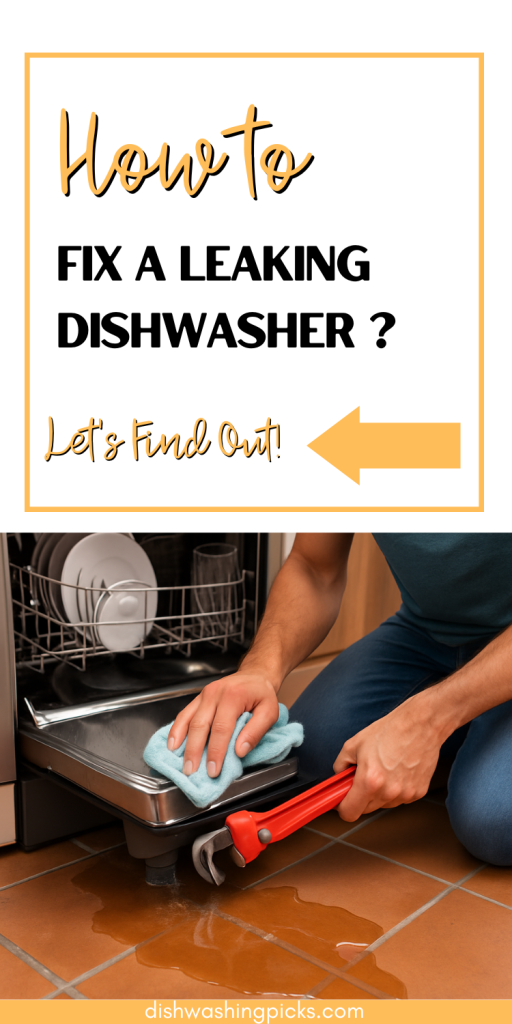
Okay, so picture this: You walk into the kitchen, half-awake, ready to grab your morning coffee… and your socks get soaked.
Yup. There it is. That lovely little puddle by the dishwasher. Again.
Why? Why does it do this to us?
Look, a leaking dishwasher sounds dramatic. Like, it conjures up images of flooded floors and ruined cabinetry, right? But in reality, it’s often something super simple that you can totally handle. No need to panic. No need to call in your cousin’s plumber-friend who charges “just a small fee.”
Let’s break it down and fix this thing together, step by step. You in?
First Things First: Let’s Not Get Electrocuted
Before we even touch the dishwasher, unplug it. Or flip the breaker off if it’s hardwired.
Water + electricity = not the kind of spark you’re looking for.
Once that’s handled, toss a towel down around the base (for morale and for soaking up any drips), and let’s go Sherlock Holmes on this leak.
Step 1: Check the Door Seal (The Usual Suspect)
Open the dishwasher door and look around the edges — there’s a rubbery gasket thing that runs all the way around, kinda like a fridge door seal.
If it’s cracked, ripped, moldy, or missing chunks… well, that could be your culprit right there.
What to do:
- Wipe it clean with a damp cloth and some mild soap. Sometimes food bits get stuck in there and mess up the seal.
- If it’s damaged? You can easily order a replacement seal online. It usually just presses right into place. No tools, no drama.
Imagine this: It’s like your dishwasher trying to hold back water with a worn-out hoodie string. Not happening.
Step 2: Take a Peek at the Bottom of the Door
Now, check the bottom lip of the dishwasher door. That’s where water loves to sneak out, especially if:
- The dishwasher is tilted forward (yes, that’s a thing)
- You overloaded the bottom rack and something blocked the spray
- The bottom spray arm is cracked or loose
Wipe it all down, make sure nothing’s warped or broken. Sometimes it’s as simple as rebalancing the machine or tightening a spray arm with a screwdriver.
Step 3: Is Your Dishwasher Sitting Crooked?
Okay, weird question—but is your dishwasher leaning forward?
It sounds silly, but if it’s tilted just a little, water can slosh toward the front and leak out during a cycle. Especially on those intense rinse spins.
Grab a level (or just eyeball it), and make sure the front isn’t lower than the back. Most dishwashers have adjustable feet—just twist them with a wrench or pliers to raise the front a bit.
Pro tip: The dishwasher should tilt slightly toward the back. Helps water drain better and keeps it from making a run for your floor.
Step 4: Check the Drain Hose (AKA That Sneaky Snake Under Your Sink)
Head under the sink and look at the drain hose—the one that connects from your dishwasher to the sink drain or garbage disposal.
Is it:
- Loose?
- Cracked?
- Spraying like a tiny fountain when the dishwasher runs?
If yes, tighten the clamp or replace the hose altogether. You can get a new one at any hardware store for cheap.
Just be sure to place a bowl or towel under it when you unhook it. Trust me, nobody enjoys the surprise splash of old dishwater.
Step 5: Pop Off the Kickplate and Check for Leaks Underneath
Okay, this part feels a little more intense—but it’s not bad.
At the bottom front of the dishwasher, there’s a little panel (called the kickplate or toe panel). It’s usually held on by two screws. Take it off, grab a flashlight, and look underneath.
What you’re looking for:
- Drips from the pump
- Water around the motor
- A loose clamp or hose under there
If you spot water but can’t tell where it’s coming from, dry it all up and run a short cycle while watching. Sometimes you need to see the leak in action to figure it out.
If it’s the pump or motor leaking… yeah, you might be headed into replacement territory. But don’t give up hope yet.
Step 6: Use the Right Detergent (Seriously, It Matters)
Quick reality check—are you using regular dish soap in the dishwasher? Be honest.
If so, congrats! You’ve created a bubble tsunami. Dish soap causes over-sudsing, which makes water and foam leak out of the door like it’s trying to escape a rave.
Always, always use detergent made specifically for dishwashers.
And don’t overfill the dispenser either—more soap doesn’t mean cleaner dishes, just more mess.
Step 7: Try a Test Run (And Fingers Crossed)
Once you’ve cleaned things up, tightened what needs tightening, and maybe swapped out a part or two, run an empty cycle.
Watch it like a hawk (or a suspicious parent watching their teen sneak out). Look around the base, under the sink, and around the door. No leaks? You’re golden.
If there is still a leak and you’ve tried everything… it might be time to bring in a pro. But hey—you ruled out a bunch of things and probably saved yourself a repair fee already. That’s a win.
Final Thoughts: You + Dishwasher = Besties Again
Look, dishwasher leaks can be super annoying, but they’re not the end of the world. A little checking here, a little tightening there, maybe a new gasket or hose—and you’re back in business.
And next time someone in your house says, “Ugh, the dishwasher’s leaking again,” you can roll up your sleeves, smirk a little, and say, “I got this.”
Now go treat yourself to that coffee. On dry socks this time. ☕🧦
